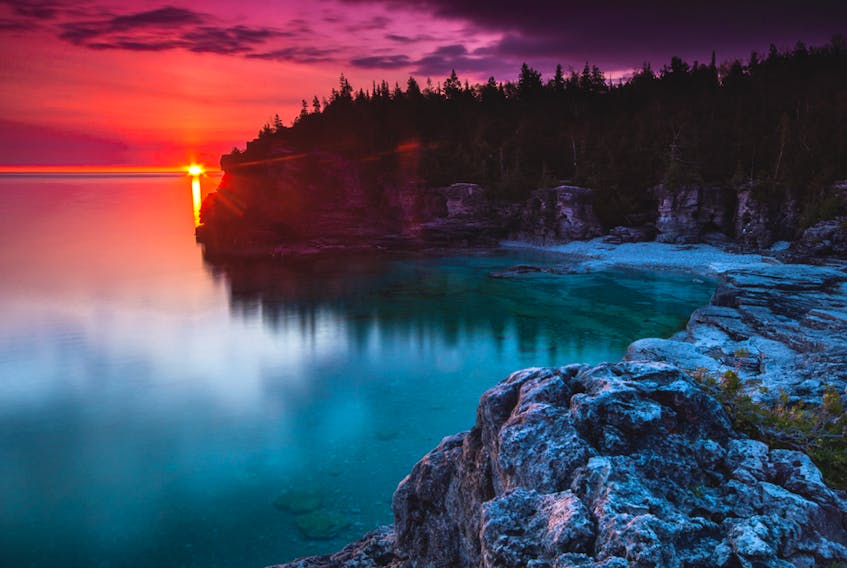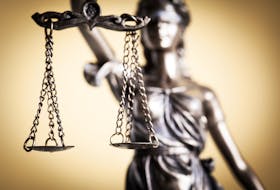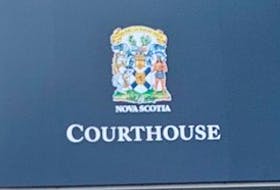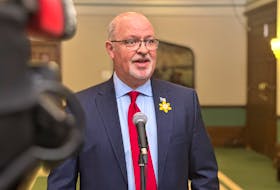TORONTO, Ont. — A massive Aboriginal claim over some of the most picturesque geography in Ontario triggered a landmark trial Thursday, with a large contingent of lawyers politely starting a delicate dance over contentious issues of land, treaty rights and money.
The Saugeen Ojibway Nation is pressing a claim to ownership of government land across the entire Bruce Peninsula and a legally unique claim for Aboriginal title over the “water territory” around it — stretching from the international boundary with the United States in Lake Huron across to Georgian Bay — along with compensation that could amount, by their accounting, to $90 billion.

A passel of more than 20 lawyers hauled suitcases and boxes filled with paperwork into court; laptops were connected to projection screens and huge maps unfurled as dozens of observers gathered in a stately courthouse in downtown Toronto.
Before Judge Wendy Matheson arrived, two Aboriginal men wended their way through the bustle to the front of court carrying a two-metre long wooden staff, draped in seven eagle feathers and topped by a carving of a bald eagle, and erected it to the left of where the judge would sit.
That the hearing began just one minute shy of its scheduled 10 a.m. start was remarkable, but not as breathtaking as the dispute everyone was here to settle.
The Bruce Peninsula is a rugged finger of land that juts deep into Lake Huron and forms the western bank of Georgian Bay, with recreational towns such as of Tobermory, Wiarton and Sauble Beach. The land claim includes two national parks and the rivers and lakes.
The water claims cover an even larger area, a huge swath of the peninsula’s adjacent water stretching from near Goderich in the west, up and around the peninsula, cutting back south through Georgian Bay making landfall east of Collingwood.
The lawsuit makes three primary claims.
The first, which is unique to Aboriginal claims in Canada, is for Aboriginal title over this “water territory” — instead of merely the land or landbeds beneath waters, as has traditionally been claimed.
The second is that the Crown breached its fiduciary trust to protect and preserve the territory of the Saugeen Ojibway Nation, referred to in court as SON and consisting of four reserves and a population of 1,900. As a fix, SON seeks compensation, which amounts to, by its accounting, $80 billion in restitution and $10 billion in punitive damages.
Lastly, the SON seek a declaration that their harvesting rights within their traditional territory were not extinguished by Treaty 72, the government’s agreement with the SON signed in 1854 that surrendered the Bruce Peninsula, except for several small parcels of land as reserves. Harvesting rights include fishing and hunting.
Water is very important to them. Some say it’s even more important than the dry land. — Bill Townshend, counsel for the Saugeen Ojibway Nation
What is not under claim by SON, court heard, is privately owned property in the area, or, in the language of the claim, land “in the hands of bona fide purchasers.”
Nor, said Bill Townshend, SON’s lead counsel in his opening address to court, are they seeking to invalidate Treaty 72 or rewrite it, rather to have the court accept SON’s version of what the terms of the treaty were understood to be at the time.
“Fishing is essential for their way of life and economic activity. Water is very important to them. Some say it’s even more important than the dry land part,” said Townshend.
To abandon their land and water rights, he said an elder in the community told him, would “be like death.”
Court heard about an earlier treaty the Crown signed with the SON, in 1836, that promised to build houses “to enable you to become civilized” and made promises that the Crown, named as “your Great Father,” would “forever protect you from the encroachment of the whites.”
That promise, said Cathy Guirguis, another SON lawyer, was not kept.
“This claim is not about judging the Crown on today’s standards or in hindsight,” Guirguis told court. “This is about looking at the evidence of what they said and what they did at the time.”
The suit is opposed by the federal and provincial governments as well as several municipal governments caught in the crossfire.
The federal government’s defence was amended as the trial got underway because of a new federal directive on civil litigation involving Indigenous peoples — the last substantive act by Jody Wilson-Raybould before being shuffled out of her role as justice minister and attorney general — Michael Beggs, lead counsel for the Attorney General of Canada, confirmed to the National Post.
Some previously filed objections were being withdrawn, he said.
“Ontario remains committed to reconciliation and the positive working relationship we’ve developed with the communities.” — David Feliciant, lead counsel for the Attorney General of Ontario
Nonetheless, much remains in contention.
He told court the government is emphasizing the importance of historical context.
“The evidence will show that the Crown acted with honour and integrity and good faith and a fairness consistent with the context of the times and it was a difficult set of circumstances that the parties were facing. There were no bad guys,” he said.
David Feliciant, lead counsel for the Attorney General of Ontario, also broached the delicate issue of challenging traditional Aboriginal knowledge keepers and the oral traditions of First Nations people.
“Our system requires that evidence be tested, so we will be cross-examining witnesses,” Feliciant told court. “Our cross examination should not be taken as a sign that we do not respect the positions taken by the plaintiffs or the evidence of their witnesses.
“Ontario remains committed to reconciliation and the positive working relationship we’ve developed with the communities.”
He also emphasized historical context.
“The conduct of Crown representative may not have been perfect but it did not rise to the level of a stain on the honour of the Crown,” he said.
The trial, which Matheson said would last “many months,” will examine history and prehistory, from the origin stories of the Aboriginal peoples and first human occupation of the land through contact with European explorers and settlers and their sometimes harmonious, often fractious relationship, to modern disputes with the government.
Expert witnesses scheduled to be heard include specialists in military history, ethnohistory, geology, archeology, anthropology, linguistics and law.
The hearing will resume Monday in Neyaashiinigmiing, a reserve of the Chippewas of Nawash Unceded First Nation on the east side of the peninsula.
• Email: [email protected] | Twitter: AD_Humphreys
Copyright Postmedia Network Inc., 2019
Related stories:









